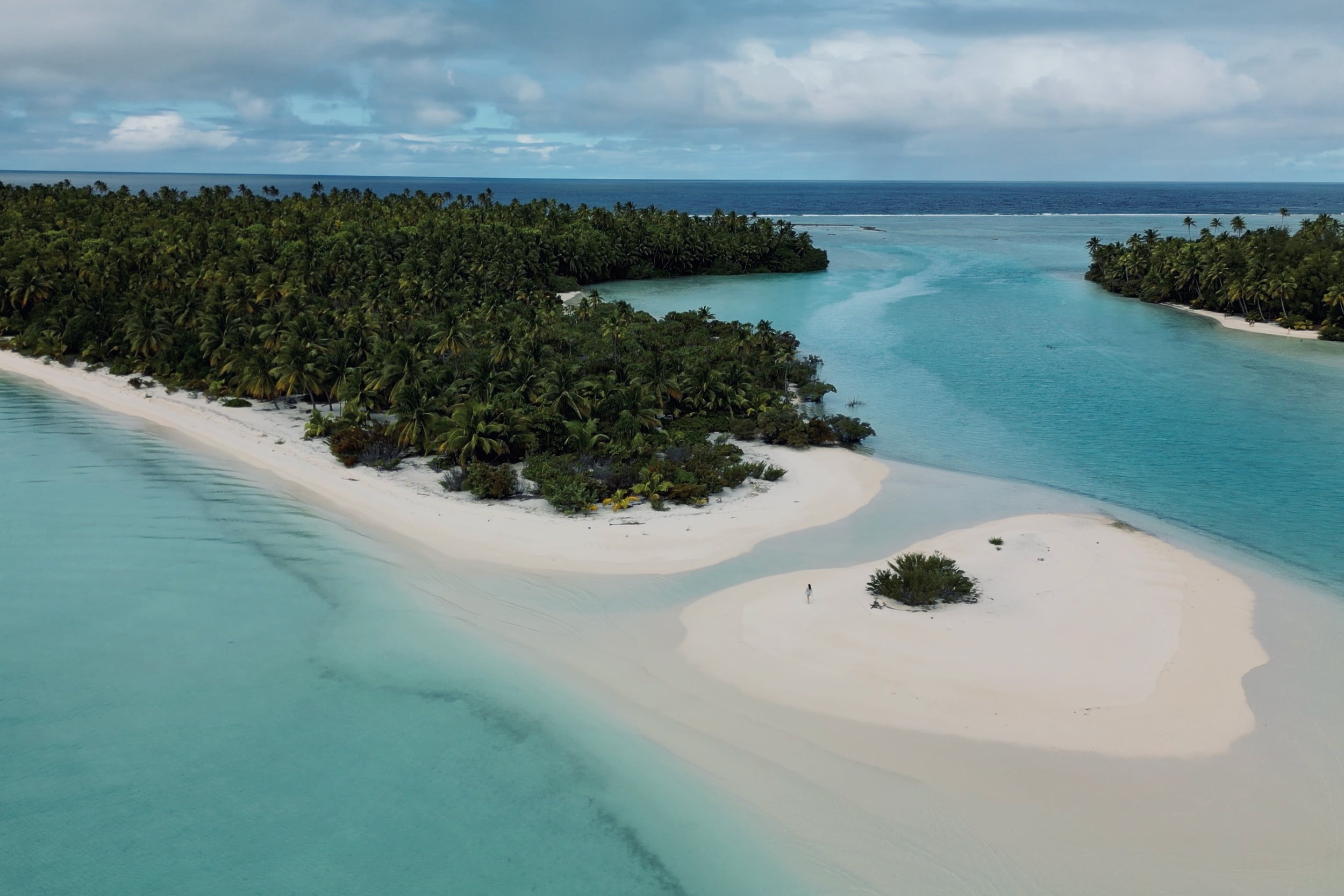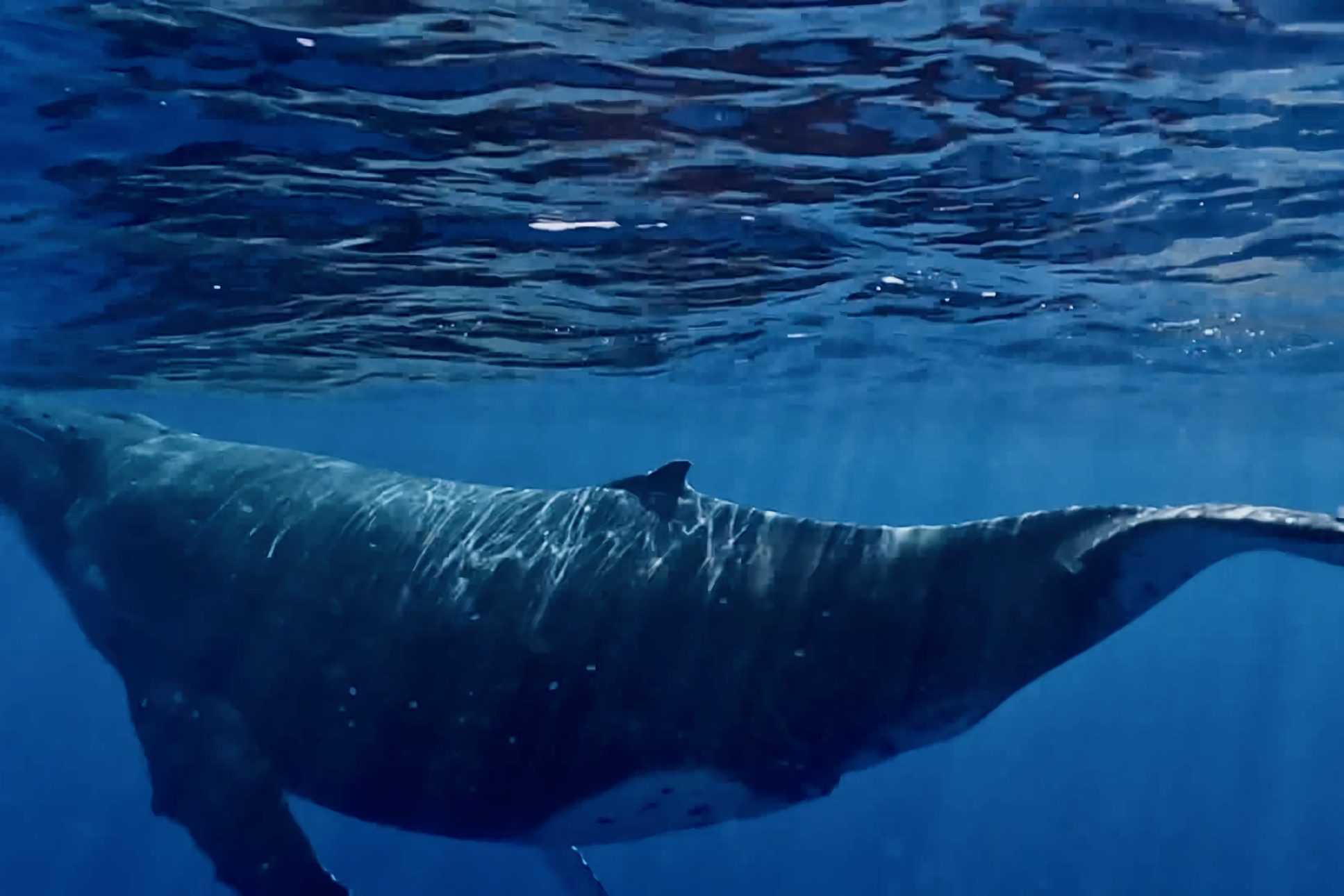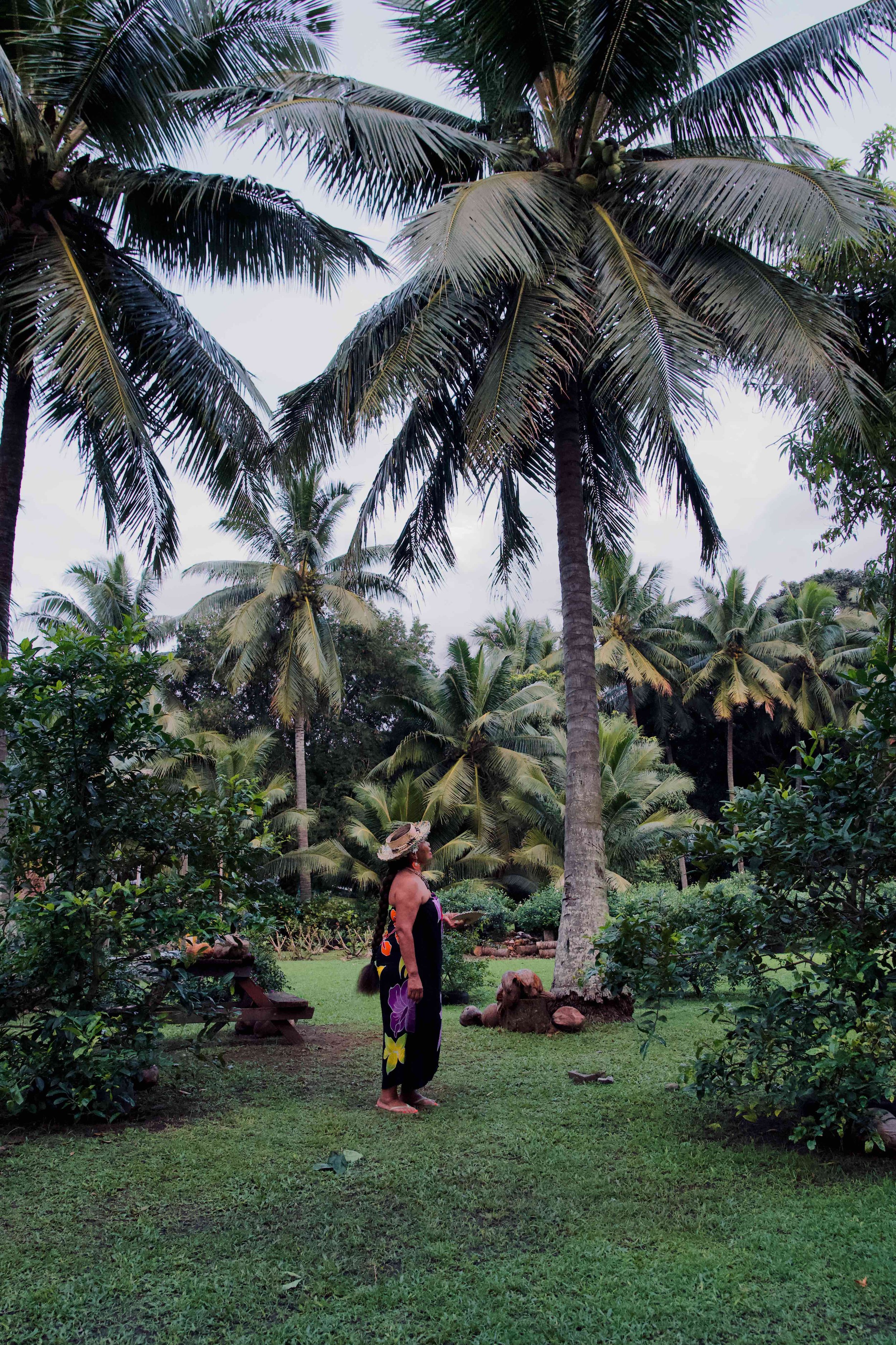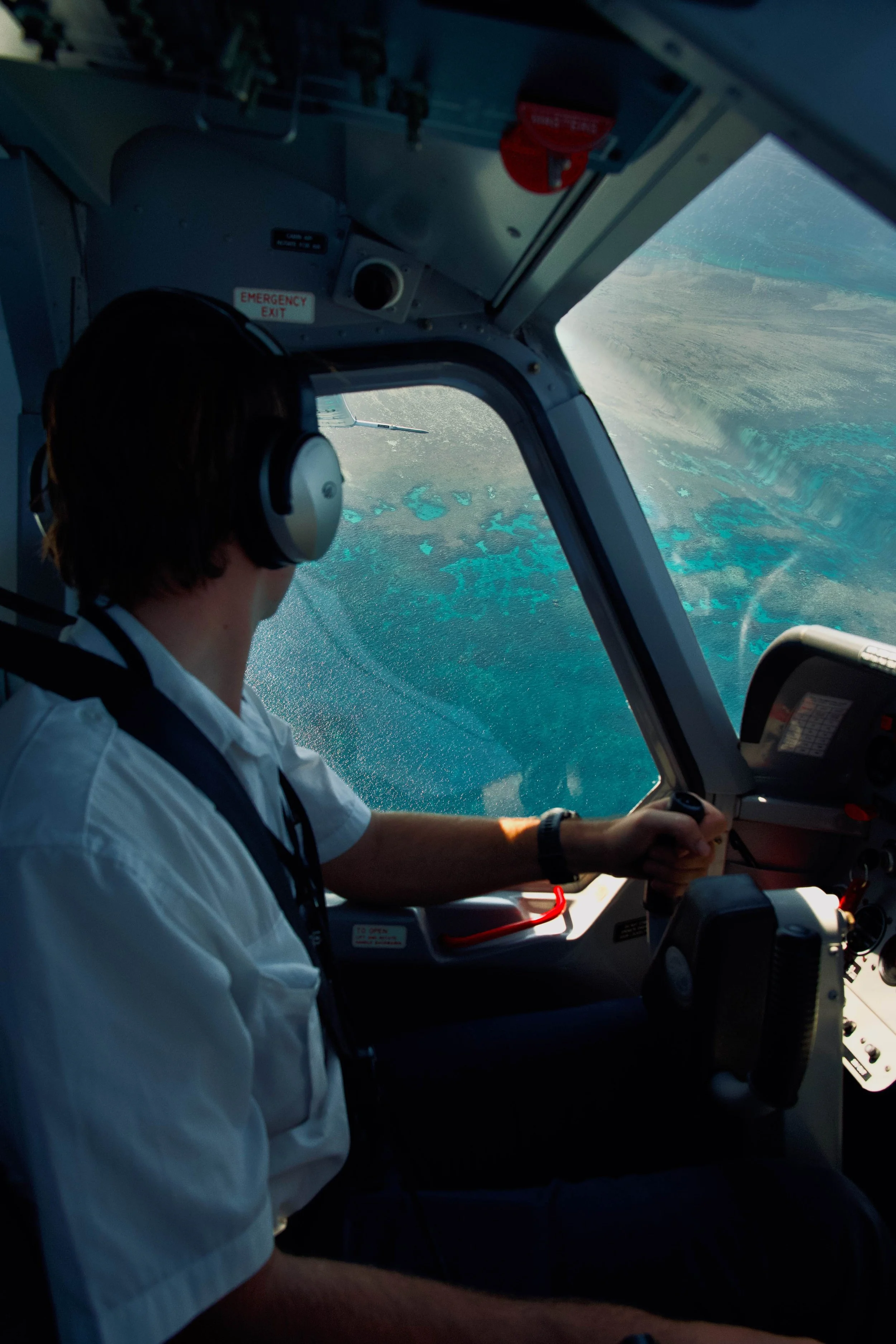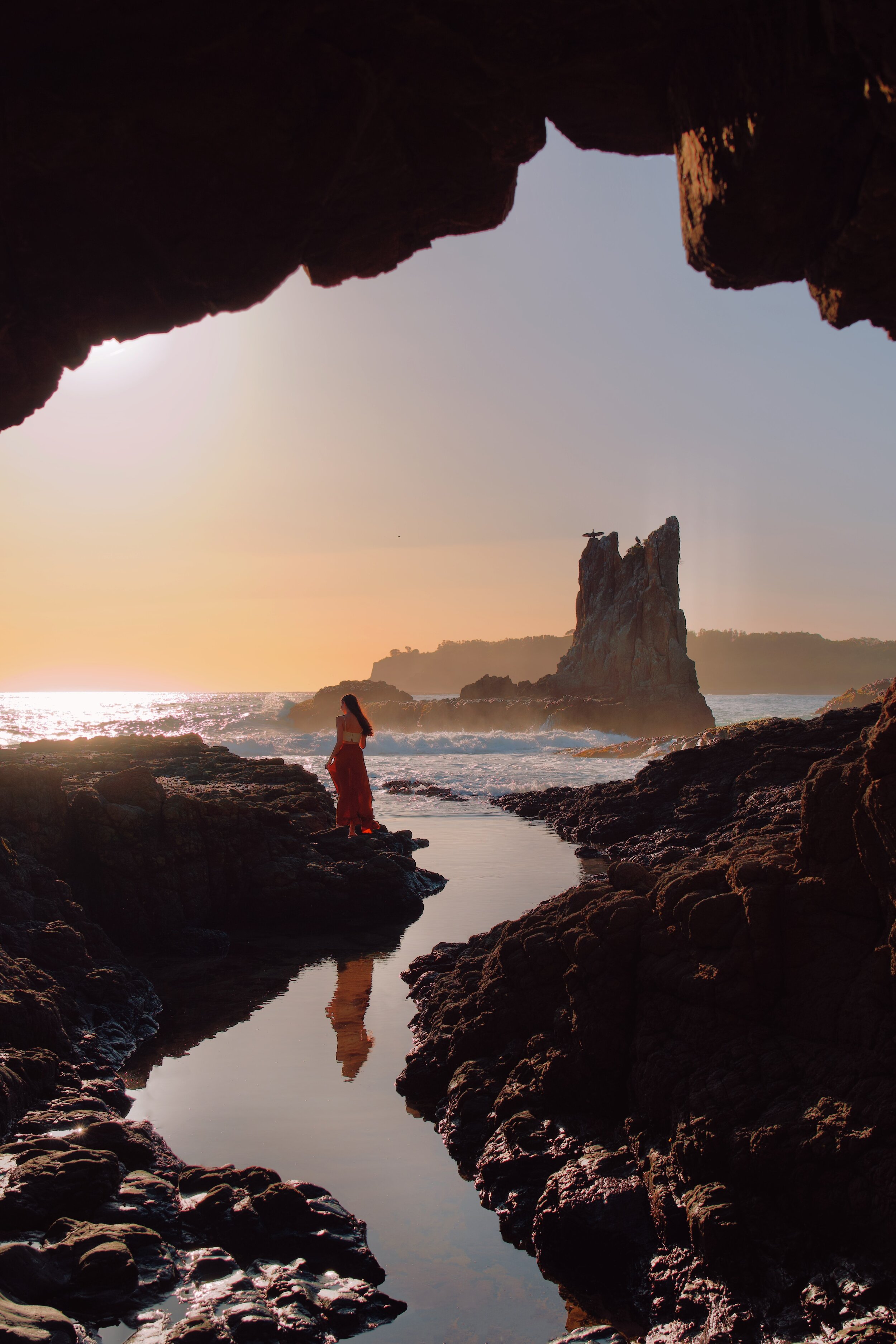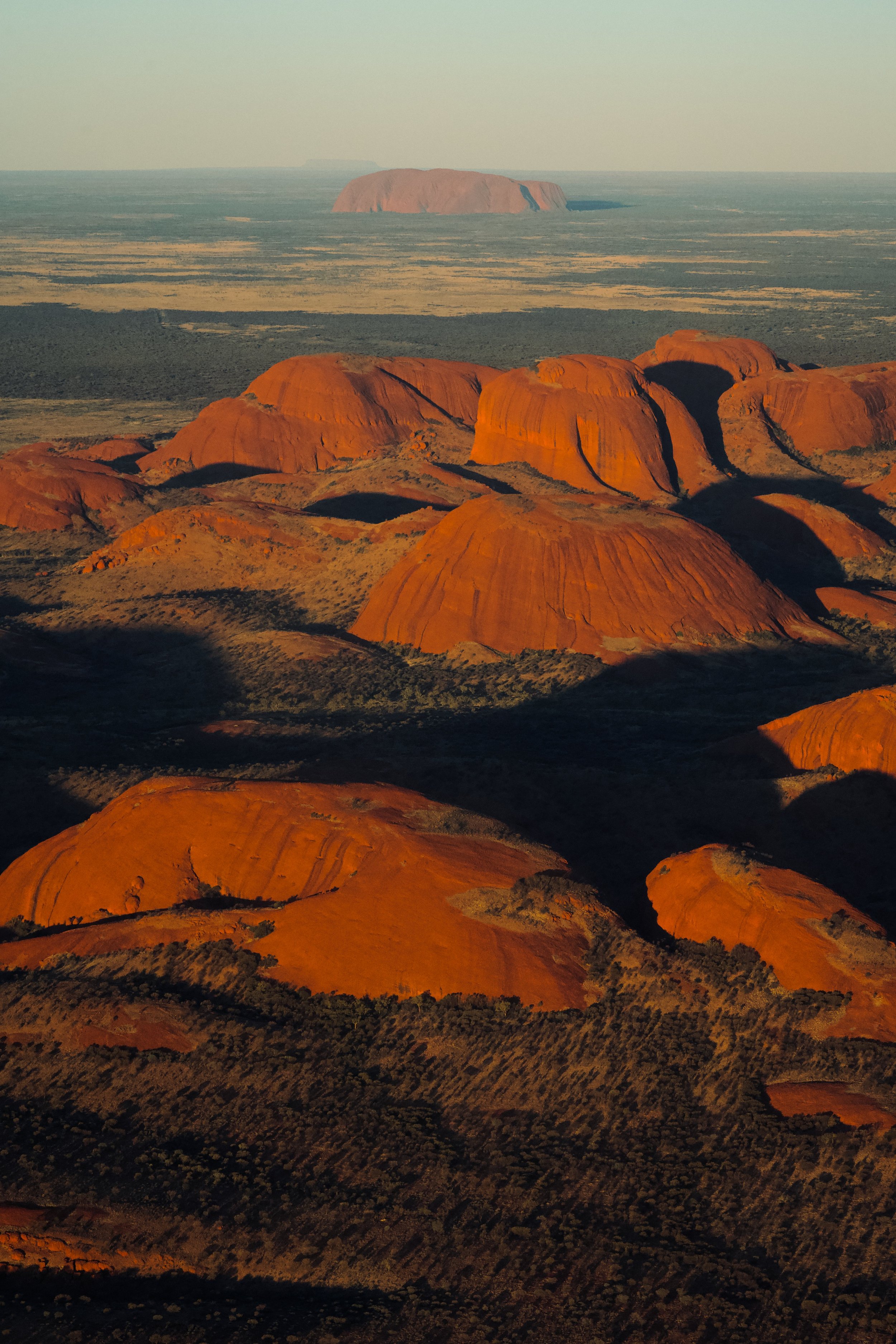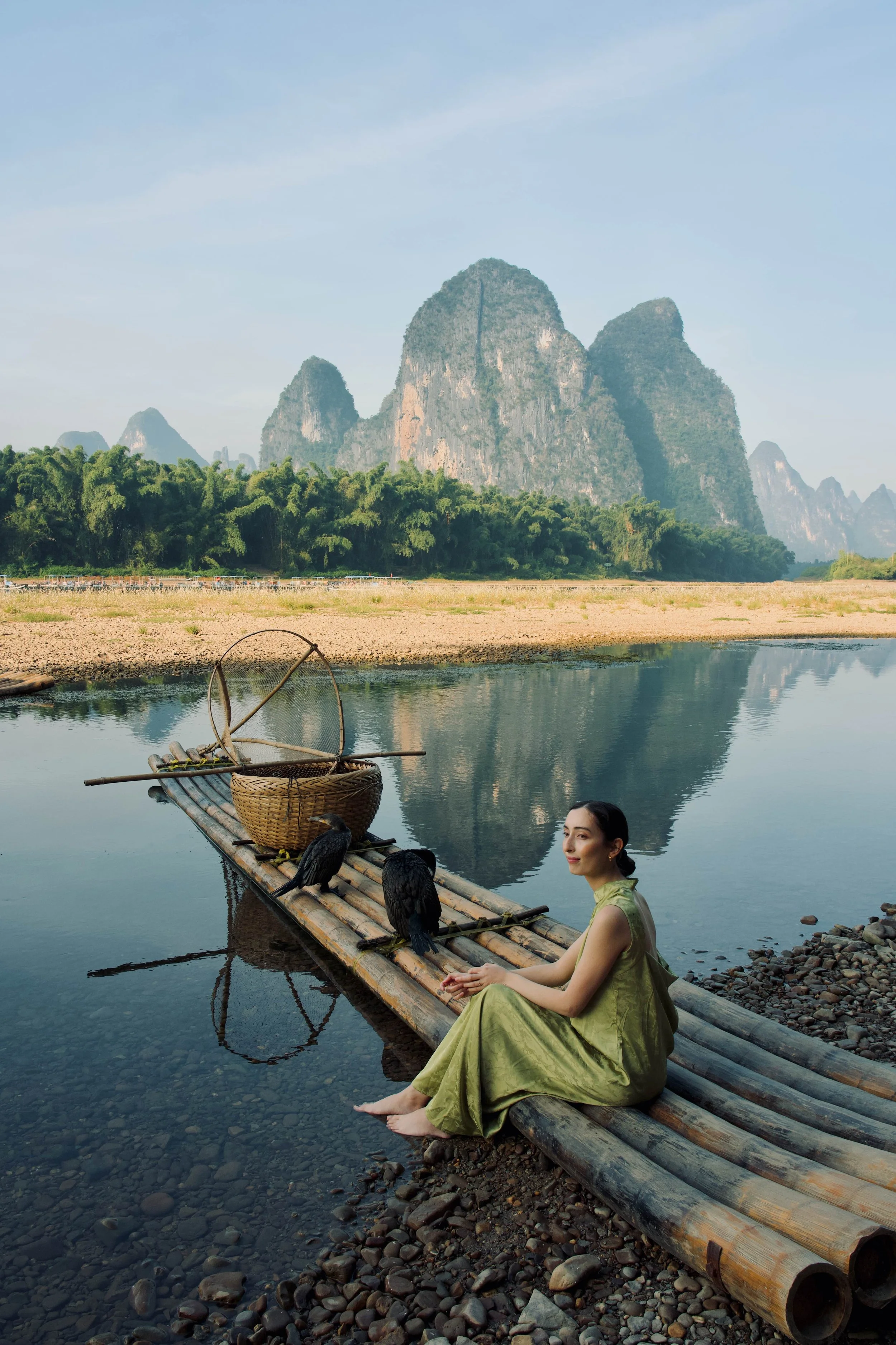The ultimate Cook Islands travel itinerary: Incredible things to do on Rarotonga and Aitutaki in 2024
Sunset view while cycling around Aitutaki
To be honest, it was a bit overwhelming to visit these small islands in the middle of 2.2 million square kilometres of ocean. We went out to even smaller sandbanks in the lagoons around Rarotonga and Aitutaki and got a glimpse of life in the deep water. We saw when whales would rest and where turtles slept on the reef. We hiked up to the Needle saw the closest point on the island to the stars. There was no waiting for anything out there—it all just unfolded with the tides.
We’ve put together this guide with everything you need to know about visiting the Cook Islands in 2024. We have included recommendations for both Rarotonga and Aitutaki, including how to get there, where to stay, and things to do on the islands.
We loved capturing this trip and if you like any of these photos, you can find us on Instagram here:
Kayaking on Aitutaki
Aerial view near One Foot Island, taken with a DJI Mavic Mini 3 Pro
Turtle in the Avaavaroa Passage, Rarotonga
Contents
Things to know before you visit the Cook Islands
How to get around the Cook Islands
By public transport
By car
By tour
Things to do in the Cook Islands
Under water - diving and snorkelling
Above water - kayaking and boat trips
On land - cycling and hiking
Skies - star gazing and drone rules
Note: This post contains some affiliate links. If you decide to book a similar experience, we might make a small commission at no extra cost to you.
Things to know before you visit the Cook Islands
How to get to the Cook Islands
Flights to the Cook Islands run from:
Auckland with Air New Zealand and Jetstar,
Tahiti with Air Rarotonga,
Sydney with Jetstar, and
Honolulu with Hawaiian Airlines.
We flew direct from Sydney to Rarotonga, and then took a domestic flight to Aitutaki.
Which islands to visit in the Cook Islands
The Cook Islands are made up of 15 islands which sit across 2.2 million square kilometres of ocean. They are located between French Polynesia and American Samoa. Rarotonga is the largest island in the Cook Islands and has an international airport, so it is the easiest one to get to. Outside of Rarotonga, other islands like Atiu, Mangaia, Aitutaki and Ma'uke can be reached within one hour by plane on domestic flights from Rarotonga.
Rarotonga
It’s definitely worth spending time on Rarotonga itself, which is a volcanic island surrounded by coral reef. There are beautiful places to hike, snorkel and swim on the island. The majority of the population of the Cook Islands also lives in Rarotonga and there are many options for accommodation and restaurants.
Aerial view of Rarotonga from Muri Beach, taken with a DJI Mavic Mini 3 Pro
Aitutaki
We loved Aitutaki the most and would recommend visiting Aitutaki if you’re after an even more remote getaway. Aitutaki has a huge lagoon with very clear, sheltered water that’s perfect for swimming and kayaking. Inside the lagoon, there are also a lot of smaller islands and sandbanks to kayak or sail up to. Just beyond the reef, the water drops back into the deep ocean where you can see whales near the shore.
Aerial view of sand bar near One Foot Island, taken with a DJI Mavic Mini 3 Pro
All-inclusive tours of the Cook Islands
Unlike other places that we’ve travelled to, we did find it slightly harder to organise and book things in the Cook Islands independently (including car hire, hiring a boat in Aitutaki, and organising whale watching) because there isn’t as much information online compared to other destinations. Joining an all-inclusive tour would have taken out a lot of the planning time and reduced the risk of travelling all the way there only to miss out on certain experiences.
If you want a relaxing trip, we’d recommend joining an all-inclusive tour that organises everything including domestic flights between the Cook Islands, transport on the islands, beachfront accommodation and food. We’ve looked into many companies and found that the best option is this six day tour of both Rarotonga and Aitutaki hosted by Intrepid Travel on TourRadar.
It includes beachfront accommodation on both Rarotonga and Aitutaki, and day trips to smaller islands in Aitutaki Lagoon. Beachfront hotels and bungalows, domestic flights, meals and boat trips really added up quickly when we did it independently so, in our opinion, this tour is good value.
TourRadar has multiple dates to join this all-inclusive tour and we’ve included more information about the best times of year to visit below.
Beachfront resort in Aitutaki
Hibiscus grown on the beach in Aitutaki
The best time of year to visit the Cook Islands
The best time of year to visit the Cook Islands is during the dry months from April to November. We went in August and it was perfect, with extremely clear skies, moderate weather and warm water. The warmest season is from November to March, which usually gets up to 30°C with high humidity and short tropical showers. Humpback whales can be seen in the Cook Islands on their migration from Antarctica between July and October each year.
Accommodation in the Cook Islands
The majority of accommodation options on the Cook Islands are hotels and resorts, but there are also inns, suites and apartments. We found that Agoda had the most options for accommodation on both Rarotonga and Aitutaki. The platform usually has deals with free cancellation which makes it easier to plan ahead.
Accommodation in Rarotonga
Being the largest island in the Cook Islands, there are a lot of options for accommodation in Rarotonga. You can choose to stay closer to the airport and capital in Avarua for more shops and restaurants, or find accommodation closer to one of the beaches.
We stayed at the Muri Beach Club Hotel for our trip, which is on the south east side of the island. Muri Lagoon is one of the most relaxing places on the island for swimming, sailing and kayaking because the water is very calm.
If you want to get around the island easily but aren’t hiring a car or taking an all-inclusive tour, we’d recommend staying within walking distance of the main road that runs around the island, which is called Ara Tapu. This is the only road that buses run on (the bus timetable can be found here).
If you need transport when you arrive, you can also book transfers between the airport and any accommodation on Rarotonga here.

Accommodation in Aitutaki
Resort accommodation in Aitutaki
Staying in Aitutaki was the highlight of our trip because we booked a resort which was based on its own island and had beachfront access to the lagoon. It already felt like a remote trip—drifting in the middle of the ocean—but staying in a secluded area added to the whole experience. To get there, the resort runs a short ferry crossing from Aitutaki main island to the private island, about a 5 minute drive away from the domestic airport.
The Aitutaki Lagoon Resort & Spa is an adult-only resort, so we’ve included other options for families below. There are many options for rooms that open out onto the beach or private pool, and it also has a number of overwater bungalows. We stayed in a Premium Beach Bungalow and had easy access to the water, which was good because we were coming in and out of the lagoon all day. They also provide a lot of equipment like bikes, kayaks, stand up paddle boards, aqua shoes and snorkels which make it easy to explore the islands and lagoon.
This resort books out quite far in advance, so we’d recommend looking for your travel dates early if you’d like a similar stay.
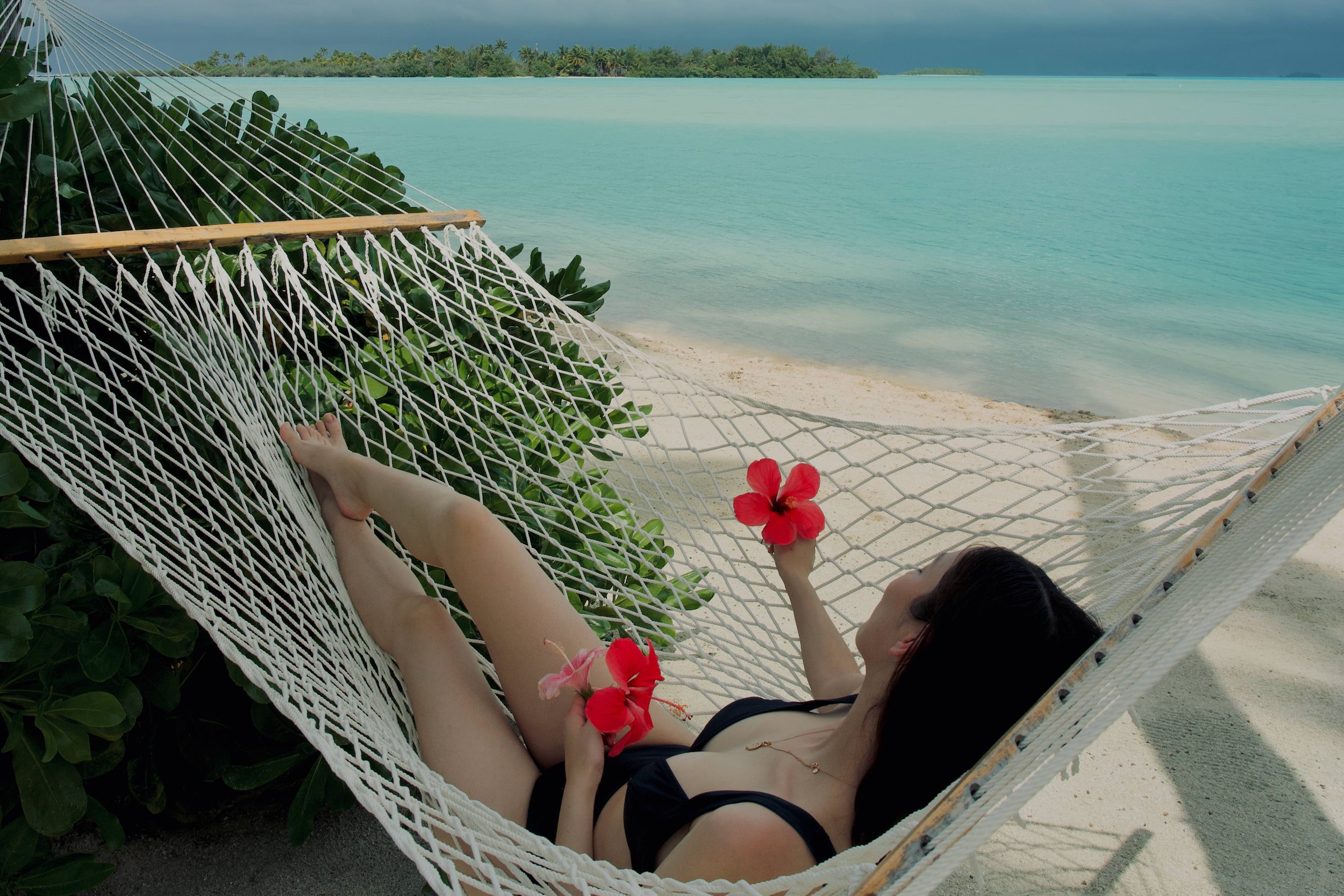
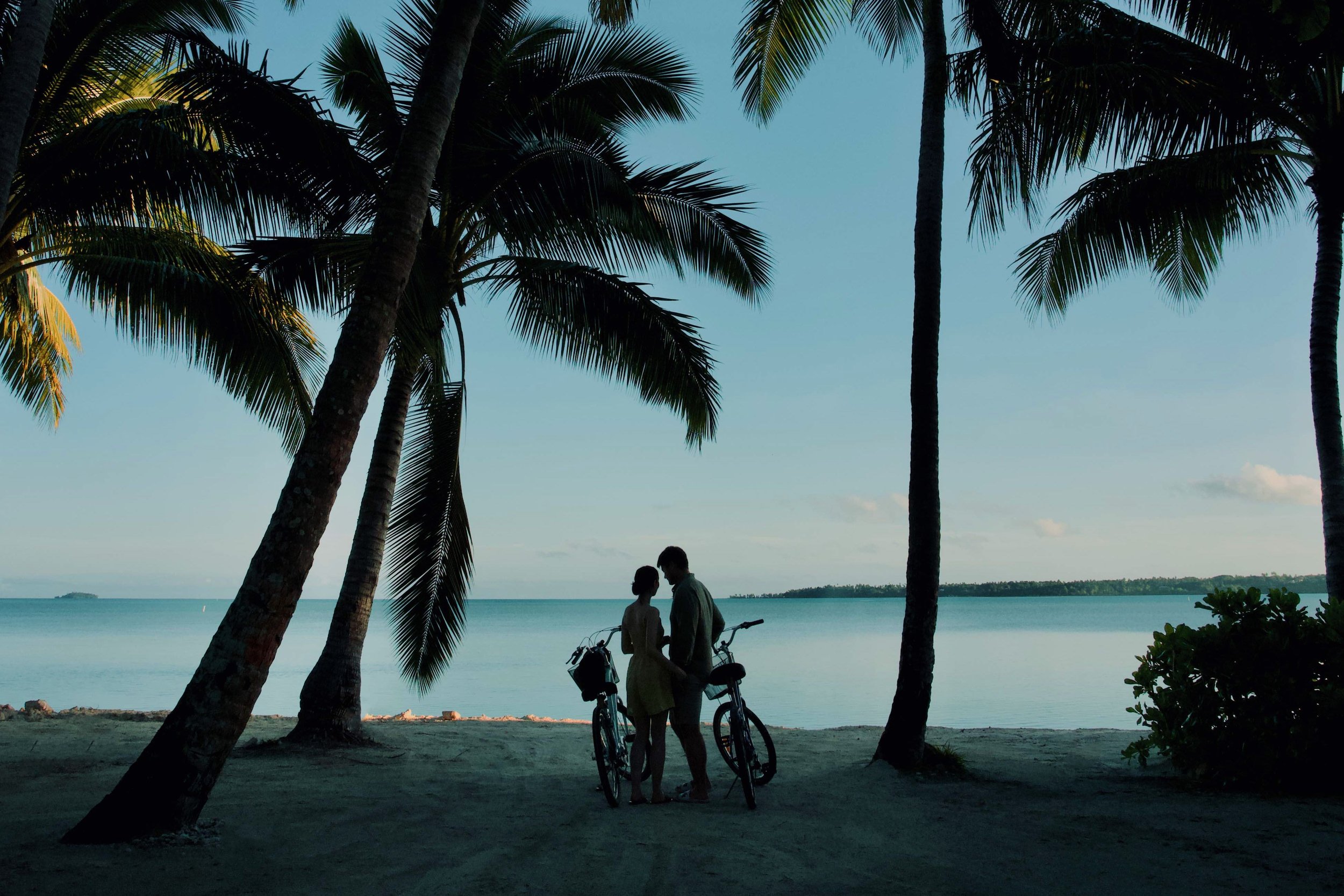
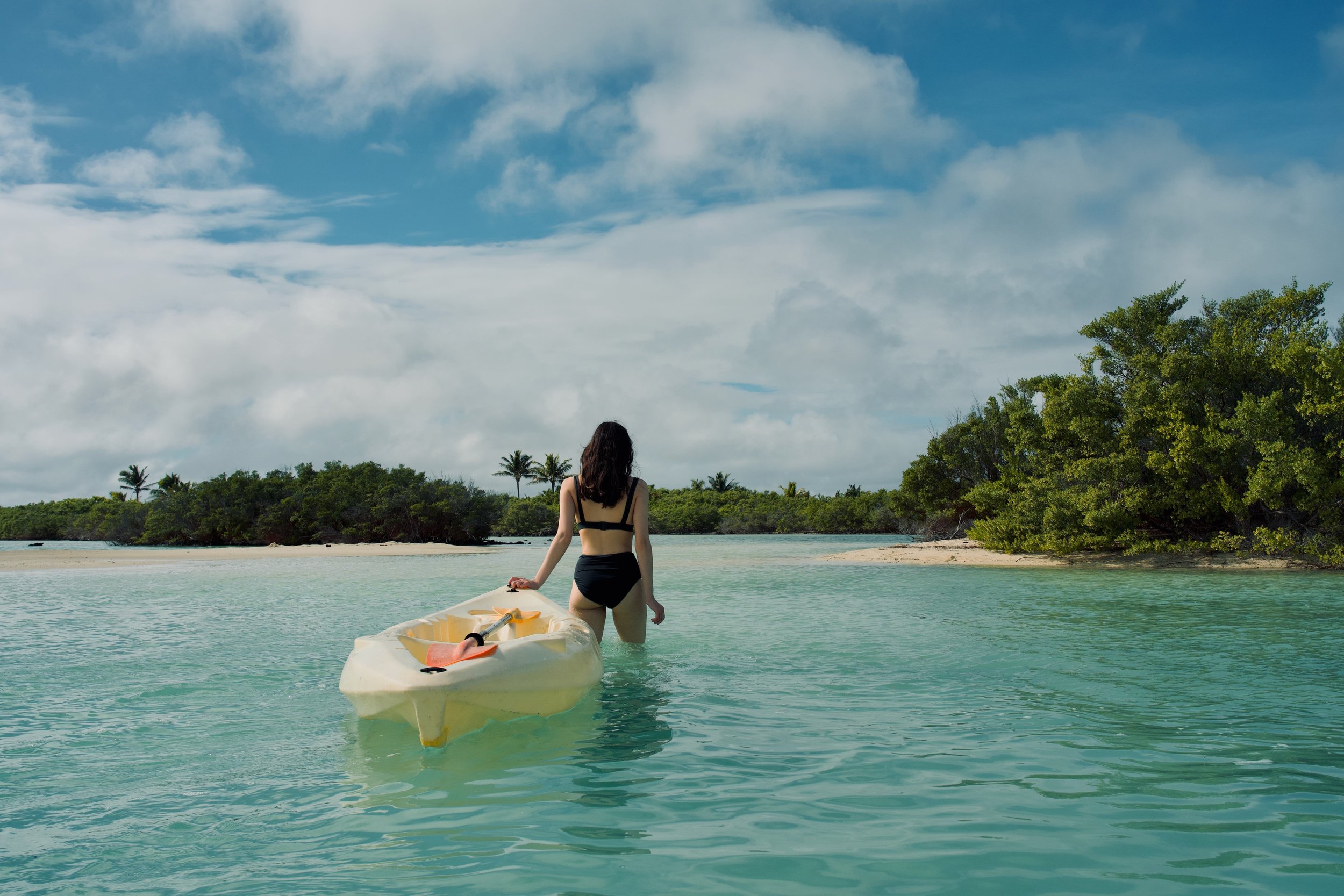

Accommodation for a family trip to Aitutaki
Aitutaki Lagoon Resort & Spa can only be booked for adults, so if you are planning a family trip we’d recommend another popular resort called Resort Tava'e. Children under 13 can stay for free in their pool-side or sea view rooms.
Island lodges in Aitutaki
Lodges are a more affordable accommodation option on Aitutaki and are usually set up with more of a homey feeling on the island. We’d recommend looking into Gina’s Garden Lodges for the lowest prices or the Sunny Beach Lodge.
How to get around the Cook Islands
Public transport on the Cook Islands
On Rarotonga, buses run in a loop around the main road, which is called Ara Tapu. You can take the bus clockwise or anti-clockwise and use it to get to the main destinations on the island. The bus timetable can be found here. If you need direct transport when you arrive on Rarotonga, you can book transfers between the airport and any accommodation here.
Hiring a car on the Cook Islands
It takes around 50 minutes to drive around Rarotonga in a full loop, so hiring a car does give more flexibility on a trip. You can hire a car from the airport or from one of the rental offices around the island.
Aitutaki is small enough to get around by bike or moped, but a car wouldn’t hurt either. You can also arrange shuttle buses or taxis (for around NZD $10 per person per direction) to get around Aitutaki or take tours that include hotel pick up.
Joining tours on the Cook ISlands
For experiences like snorkelling, bike riding or whale watching, sometimes the easiest way to get around the Cook Islands is to join a tour which organises everything. We’ve included more information below about the day tours that we joined.
How long to spend in the Cook Islands
We feel like ‘island time’ is very real in the Cook Islands and even though we were only there for around 10 days, it felt like a much longer trip. Everything moves at a slower pace and there is so much to see below the water. We met some people who were visiting the Cook Islands for just a few days, and others who planned to be there for a few months—so you can really have either kind of trip. To make the most of your time there, we would recommend staying for at least 4 days on Rarotonga and 3 days on Aitutaki.
How much to budget for a trip to the Cook Islands
The Cook Islands are on the pricier side of destinations that we’ve visited. This is mostly because the flight paths are limited (both international and domestic), food and groceries have to be imported into the island, and the accommodation and dining style mostly caters to resorts. There are also limited tour options, so the prices are set for certain experiences like whale watching or sailing in the Aitutaki Lagoon.
If you want to make the most of the resorts and lagoons in the Cook Islands, we think that joining an all-inclusive tour like this six day tour of Rarotonga and Aitutaki is good value because it includes beachfront and bungalow accommodation (which generally starts at $200 per night depending on the location), boat tours in the lagoon (which start at $145 per person and go up to $600 per couple), and meals (which are between $25-40 per main dish in the popular areas and hotels).
Having said that, there are also options to reduce costs. The first thing that we’d suggest is to take as much as you can and don’t rely on buying things there. We noticed that items like mosquito repellent, sunscreen, swimwear, and medicine were generally 50% more than what we would pay in Australia. Non-perishables like chips, crackers and confectionery were also as expensive, while fresh food and veggies were far more expensive. If you do need to shop for groceries, there are two supermarket chains on Rarotonga, CITC and Wigmores, which are a bit more reasonably priced than the convenience stores you will see all around the island. You can also find food options outside of the resort areas, like the Muri night markets on Rarotonga, and look into lodges instead of resorts for accommodation.
To save money on currency exchange and cash withdrawals, we used our WISE card while travelling in the Cook Islands, which you can instantly sign up for here. It has worked for electronic transactions and ATM withdrawals in every country that we’ve visited and saved us so much money in currency conversion fees over the years.
Mobile data and wifi on the Cook Islands
The Cook Islands are fairly off-grid. You’ll need to find WiFi hotspots around Rarotonga and Aitutaki (mostly in restaurants, resorts and shops) to connect to, and login using Vodafone’s WiFi hotspot passes or eSIMs which you can buy online or in person at the airport, most supermarkets and some hotels and resorts. Vodafone is the only provider of WiFi and mobile data in the Cook Islands.
Things to do in the Cook Islands
Above water - kayaking and boat trips
Skies - star gazing and drone rules
Taking an orientation tour of Rarotonga
When we arrived on Rarotonga, we took this orientation tour with Cook Island Tours. The tours can be customised to go anywhere on the island, but we basically did a full lap. It was the perfect way to get an introduction to our trip with a guide who could answer any questions.
We went along the coast and stopped at a lot of beaches. Our guide showed us the best places to snorkel and also pointed out areas with dangerous current. As we went inland, they were able to show us the best place to start the hike up to the Needle. Under the volcanic mountains, we also got to visit a local house for a huge home cooked lunch.
Snorkelling on the reef in the Cook Islands
The Cook Islands protects an area of nearly 2 million square kilometres called Marae Moana, or ‘sacred ocean’. It is home to 136 species of coral, over 600 species of fish, 21 species of whales and dolphins, and three threatened turtle species. When we arrived on Rarotonga, we took an orientation tour of the island with Cook Island Tours. Our guide showed us the best places to snorkel and also pointed out areas with strong or dangerous currents.
One of the best places to snorkel in Rarotonga is the Aroa Marine Reserve on the south west side of the island near Aroa Beach. While we were there, we swam with so many schools of tropical fish and at some times we were completely surrounded by them.
There are a few options for arranging snorkelling on Rarotonga, depending on what you are interested in seeing. We’ve put more information below about swimming with turtles, rays and whales. To start with, if you’d like to reach huge schools of tropical fish and moray eels in the marine reserve around Rarotonga, we’d recommend looking into this tour of the lagoon that provides sea scooters to help you swim faster.
If you’re interested in a longer experience around the island, this half day tour of Rarotonga includes snorkelling in the Marine Reserve. The experience is very highly rated on Viator, with over 700 five star reviews, and provides snorkelling equipment on a glass bottom boat from Muri Beach from Avarua. It also stops at Motu Koromiri for a barbeque lunch on the beach.
If you want to snorkel further out in the open ocean off Rarotonga, we’d recommend taking this tour that goes to the coral gardens and a 100 year old shipwreck. It won an Eco-Adventure Tourism Award and provides sea scooters to help you swim faster. The tour operates beyond the reef and has chance encounters with sea turtles, whales (in certain seasons), reef sharks and puffer fish.
If you want to see the reef on an all-inclusive trip to the Cook Islands, this six day tour on TourRadar includes snorkelling off the coast of Rarotonga.
Snorkelling in the Aroa Marine Reserve, Rarotonga
Snorkelling with turtles in the Cook Islands
The most popular place to see turtles off the coast of Rarotonga is in the Avaavaroa Passage, which can be reached without a boat from Turoa Beach. However, the best areas of the reef for seeing turtles also have strong currents that rapidly change with the tides, so we were warned not to go out without a guide as there have been numerous drownings in the passage.
If you want a guaranteed experience of swimming with turtles, we’d recommend joining this turtle snorkelling tour. You need to be a competent swimmer, but the tour runs when the water is safe and calm, and each group is guided by lifeguards (we had families in the tour that we joined and it was possible for kids to go too). They provide all of the snorkelling equipment and coconuts on the beach after the swim. We learnt so much about the ecosystem on this trip and saw many turtles. In the deeper parts of the reef, we also saw a giant moray eel.
The tours to swim with turtles can fill up quickly in Rarotonga, so it helps to book them in advance. When we went, we hadn’t booked ahead and the the turtle tours were full for several days (it was just lucky that we had enough time on the island to wait for the next opening). Most tours will also take a group of people, so if you are after a private experience, you could also look into this private turtle snorkelling tour which comes with professional underwater photography.
Turtle resting in the Avaavaroa Passage, Rarotonga
Snorkelling with eagle rays in the Cook Islands
Eagle rays can be seen in some of the deeper passages of reef around Rarotonga. We wouldn’t recommend going out without a guide as the currents in these passages are very strong and the tide can quickly change the conditions.
To get to passages with eagle rays, we’d recommend taking this turtle and ray snorkelling tour, which includes photography by a professional underwater photographer. The tour provides all snorkelling equipment and is guided by a team of divers and trained lifeguards who can help you through the water (but you do need to be a competent swimmer to join). It isn’t always possible to see the eagle rays as they can be swimming quite deep, but this is one way to get to the area they swim in, and you’ll definitely be able to see turtles in any case.
Whale watching in the Cook Islands
The zone around the Cook Islands is formally recognised as a whale sanctuary. On their migration from Antarctica, humpback whales rest in the warm waters around the Cook Islands between July and October each year. They come so close to the islands that their songs can be heard above and below the water.
Male humpback whales sing the same song at the same time. In this part of the world, the songs are shared on migration routes or at feeding grounds and are carried east from Polynesia, across the Pacific Ocean, and all the way to South America.
Whales can usually be seen from the shore in Rarotonga from July to October. We’d recommend going to the western side of the island to see them from the shore, like Black Rock Lookout. From Aitutaki, we could see where everything drops beyond the lagoon into deep water and we were able to take a whale watching cruise with Dive Aitutaki just outside the lagoon.
The tour took cash only, so take NZD. To withdraw money, we used our WISE card while travelling in the Cook Islands, which you can check out here.
Whale watching in Aitutaki
Humpback whale taken with a DJI Mavic Mini 3 Pro
Swimming with whales in the Cook Islands
As soon as we found out that it was possible to swim with whales in the Cook Islands, we dived in. We booked this trip with Dive Aitutaki (Bubbles Below) when we were on Aitutaki and went out in a boat that was set up for snorkelling and diving.
We left the shore and looked for any movement on the horizon—sometimes we’d see the whales come to the surface and other times we saw them breach. Our tour guide, Onu, would take us over to the area and sometimes we could see where the whales had last been, because they leave a footprint of flat water on the ocean surface. Then, we turned the engines off and drifted until they came towards the boat. Sometimes we waited for a long time, and other times the whales appeared out of no where. They seemed curious about the boat and were very playful around it.
When the whales were relaxing at the surface, we were able to get into the water. We had so many encounters and were able to swim with them beside the boat for quite a long time.
We aren’t affiliated with Dive Aitutaki, but we would recommend taking this tour if you want to swim with whales in Aitutaki. While we were out with them for two days, we saw a lot of other tour operators who chased after the whales as soon as they were spotted, and got everyone to jump into the water despite the whales having clearly moved on. It didn’t create a good environment for the whales and we were grateful for the considered approach that our guide took in the area.
Swimming with humpback whales, taken on a GoPro
Whale watching near Aituaki
Swimming with humpback whales, taken on a GoPro
Kayak in the lagoons of the Cook Islands
The lagoons around Rarotonga and Aitutaki have very still, clear water. If you’re staying on Rarotonga, Muri Lagoon is the perfect place for kayaking. If you visit Aitutaki, there are 15 small islets in the lagoon. We were able to kayak straight from out accommodation to three of the nearby islands and it felt like paradise. The Aitutaki Lagoon Resort & Spa provides kayaks and equipment and has access straight into the lagoon from its private beaches.
If you’re looking for an all-inclusive trip to the Cook Islands, this six day tour of Rarotonga and Aitutaki on TourRadar includes kayak hire on both islands.
Kayaking in the Aitutaki Lagoon
Palm trees growing diagonally on Honeymoon Island in the Aitutaki Lagoon
Kayaking between islands in the Aitutaki Lagoon
Lagoon cruise to one foot and honeymoon islands
One of the highlights of our time in the Cook Islands was a lagoon cruise around Aitutaki Lagoon. We had already reached a few of the smaller islands by kayaking from our accommodation, but we decided to take a boat trip out to even smaller sandbanks on the other side of the lagoon.
We booked a small boat through Bishop’s Cruises to have more flexibility and went with their full day option. At the time that we booked, their packages started at NZD $140 per adult for a full day cruise, and NZD $600 for two adults for their private charters. We visited Honeymoon Island, One Foot Island and many small islets in the lagoon, and the package includes a fully catered lunch. The water in this area is unbelievable—on the way we saw eagle rays, turtles, coral and giant clams in the lagoon, and could easily stop to snorkel any time.
If you’re looking for an all-inclusive trip to the Cook Islands, this six day tour of Rarotonga and Aitutaki on TourRadar includes sailing in Aitutaki Lagoon.
View of Honeymoon Island from the boat while sailing to outer islands in the Aitutaki Lagoon
Aerial view of a sand bar on One Foot Island while on a lagoon cruise in the Aitutaki Lagoon, taken with a DJI Mavic Mini 3 Pro
Visiting Honeymoon Island in the Aitutaki Lagoon while on a lagoon cruise
Bike ride around the Cook Islands
The Cook Islands are great for cycling if you don’t mind cycling some reasonable distances each day. While we were on Aitutaki, our accommodation at the Aitutaki Lagoon Resort & Spa provided us with bikes and we explored Aitutaki by cycling on paths lined by palm trees all day. It was a comfortable way to get around Aitutaki, including to beaches, the town and the start of Maunga Pu Hill, a short hike to the highest point on the island. We would’ve cycled around 25-30km that day over 3-4 hours.
Rarotonga is a much bigger island, but much of it would be accessible by bikes. There are also several tours that provide bikes to cycle around the island. This one is the highest rated and includes a three hour trip (around 8-12 km) through the Arorangi village. It goes through the back roads with mountain scenery and to Black Rock Beach, and also includes lunch.
Sunset view while cycling on Aitutaki
The cross island track and needle climb on Rarotonga
Distance: 6-8km from one end to the other
Difficulty: moderate to challenging.
Time: 4-5hrs
The Cross Island Track and Needle Climb is a hiking route that goes right across Rarotonga, from the north end of the island to the south. It’s a beautiful way to get sweeping views of the tropical jungle terrain of Rarotonga, and visit landmarks such as the Needle mountain (Te Rua Manga) and Papua Waterfall (also called Wigmores Waterfall).
A lot of online blogs say the hike is between 8-9km long, but the official signs on Rarotonga say it’s only 7km from end to end, and even less if you start at the carpark about 2.5km in from the north end (the Main Road on the Avatiu Harbour side). We’d say it’s a moderate to challenging hike depending on how wet it is, because it goes through the thick and muddy jungle, and there are parts where you are hiking only on tree roots. Allow about 4-5 hours if you’re planning to hike the Cross Island Track from one end to the other.
Where to start the Cross Island Track
Since the Cross Island Track and Needle Climb crosses from the north end to the south end of the island, you can start at either end of the track. Most people start at the north end because it gets through the steepest part of the hike at the start, and so they can swim at the Papua Waterfall at the end of the trail on the south of the island.
We were short on time, so we did a quick return hike to the Needle Climb starting from the carpark in the north end. It was only about 3km return, but it took about 3 hours in total including about a half hour detour to climb the Needle and walk a little bit further down the track to get a good view of the Needle. The steep section at the start was definitely harder to climb down than up, and would be quite slippery and potentially dangerous in wet conditions.
If you plan on hiking the full Cross Island Track, we’d recommend starting from the north end of the track. The starting point is from Avatiu Road in town, behind the Sea Salt Takeaway and Pandanus Gas Station (which you can be dropped in front of by the public bus). Follow Avatiu Road (which becomes Uraua Drive) and continue for about 2.5km until you see the trailhead signs and map. You should pass the Rarotonga Power Station along the way. We’ve linked the starting point from town below.
If you have a car and want to start at the carpark on the north side, we’ve linked the carpark below.
Alternatively, if you want to do the hike from south to north, we’ve linked the starting point on the south side below (follow Papua Road inland).
The Needle Climb
When you get to the Needle, there is an option to climb part way up the rock face, with a metal chain and rope to hold on to. It’s a short climb, only about 2 or 3 minutes, but it’s particularly steep and quite dangerous even in dry conditions. The view of the jungle is beautiful on the other side, but nothing worth risking your life for if you’re not comfortable with heights and climbing. It’s definitely not for the feint of heart, so we wouldn’t recommend it if that’s you—there’s really nothing stopping you from going over the cliff edge if you slip. If you do plan on going up, stick to the side of the wall where the chain and ropes are. The descent is a bit more difficult and risky, so there’s no shame in butt-scooting down for safety.
The Needle, Te Rua Manga, Rarontonga
View of the mountains while hiking to the Needle, Te Rua Manga
A baby red-tailed tropic bird found on Honeymoon Island while in a lagoon cruise in Aitutaki in the Cook Islands
Local food in the Cook Islands
After hiking to the Needle, we joined a progressive dining experience with Cook Island Tours. Three families shared their homes to us and cooked a huge feast for dinner and dessert. We started by opening coconuts in the backyard, followed by a smorgasbord of local dishes. One of our favourite dishes was ika mata, which is raw fish marinated in lemon and served with tomato, cucumber, ginger and coconut cream. The hosts told us that this experience is shared with the concept of manaakitanga, meaning to show more than hospitality—to extend genuine care for others and uplift their spirit.
If you’re staying on Rarotonga and looking for other ways to experience local food, there are regular markets for local dishes, like the Punanga Nui Markets on Saturdays and the Muri Night Markets (Tuesday-Thursday, and Sunday evenings from 5pm). The stalls are cash only, so take NZD cash. To withdraw money, we used our WISE card while travelling in the Cook Islands, which you can check out here.
The best foods to try are off the barbeque, fresh fruits and vegetables like starfruit, papaya, coconut and taro, and all of the seafood.
One of our hosts on the dining experience
Coconuts growing on Honeymoon Island in Aitutaki
Coconuts growing on Rarotonga
See the sunset from Black Rock Lookout on Rarotonga
Black Rock Lookout is one of the most beautiful places on Rarotonga and it is the perfect place to watch the sunset from the island. Between July and October, it is a great vantage point for whale watching. We went at sunset and immediately saw whales breaching from the car park, before we even got down to the beach.
Black Rock Lookout, Rarotonga
Star gazing from the Cook Islands
The Cook Islands are some of the best places for stargazing, particularly if you’re staying in a remote area with no light pollution. Aitutaki was great for this, because we could walk out from our accommodation towards the lagoon where we saw a huge moon rise from the ocean and clear skies above us. It was truly amazing to see where Polynesian navigators led canoes between the islands for thousands of years by following the wind, ocean and stars.
When we arrived on Rarotonga, we took an orientation tour of Rarotonga with Cook Islands Tours. Our tour guide took us to the Garden of Seven Stones, which is a memorial site on Rarotonga for the Māori migration to Aotearoa/New Zealand over 1000 years ago. It is a commemoration of the seven canoes that departed from the same bay in Rarotonga, each with families from the various islands in the South Pacific (Hawaiki), and voyaged to Aotearoa/New Zealand some 3000 kilometres away.
Our guide described how the early navigators followed ocean currents and swell, the sun and stars, and patterns of seabirds and whales. He explained that descendants (like himself) can trace their origin back to the seven voyaging canoes that arrived in Aotearoa/New Zealand.
Clear night sky above Aitutaki
Where you can fly a drone in the Cook Islands
Drones can’t be flown near airports, which doesn’t leave too much room on the Cook Islands. However, you can safely and legally fly a drone in some areas. We were able to take ours to the smaller islands in the Aitutaki Lagoon with the permission of tour operators who confirmed that it was outside the restricted airspace. On Rarotonga, you should also be able fly a drone without a permit on Muri Beach and Titikaveka (but definitely check the latest regulations). If you’re flying a drone for commercial use anywhere on the Cook Islands, you’ll need a permit from the Cook Islands Ministry of Transport.
Aerial view of sand bar near One Foot Island, taken with a DJI Mavic Mini 3 Pro





